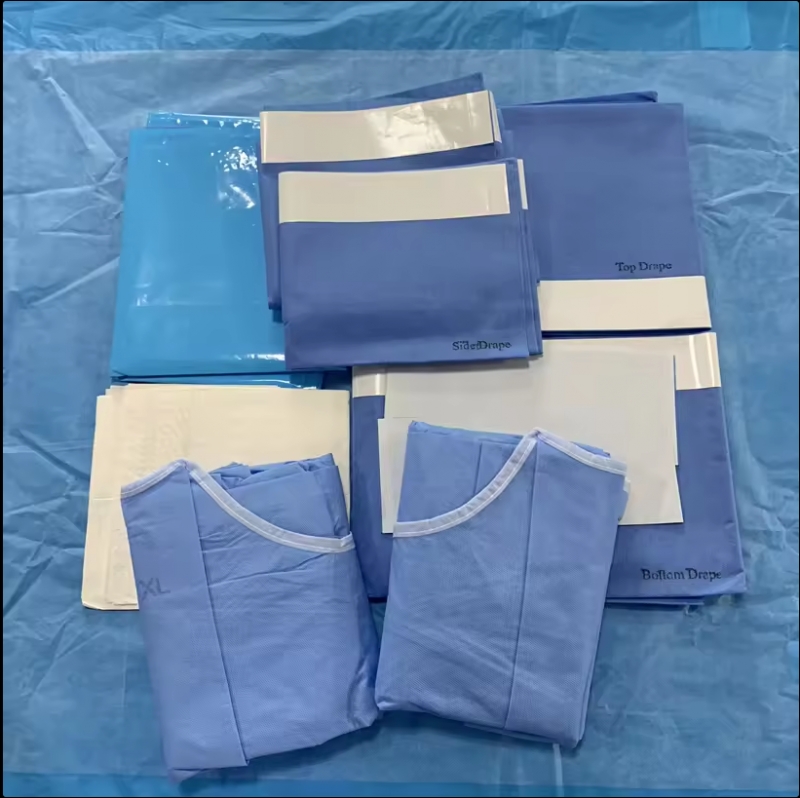what kinds of surgical packs

Surgical packs are categorized by the medical specialty they are designed for, such as Orthopedic, Cardiovascular, Urology, Obstetric, or ENT. They can also be categorized by the specific procedure (e.g., Laparoscopy, Lithotomy) or general purpose (e.g., Universal Packs).
By medical specialty
Cardiovascular: For heart and blood vessel procedures.
ENT (Ear, Nose, and Throat): For head and neck surgeries.
Orthopedic: For bone and joint surgery.
Urology: For urinary tract and male reproductive system procedures.
Obstetric/Gynecological: For childbirth and women's reproductive health.
By procedure or purpose
Laparoscopy: Minimally invasive abdominal surgery.
Laparotomy: Open abdominal surgery.
Lithotomy: Procedures requiring a specific patient position.
Cardiac Catheterization: For inserting catheters into the heart's blood vessels.
Cystoscopy: For examining the bladder.
Universal/General: Designed for a wide range of basic procedures.
Custom: Packs tailored to the specific needs of a hospital or a unique procedure.
In veterinary medicine
Advanced Orthopedic: For complex orthopedic surgeries in animals.
Feline Dental Kit: Specifically for dental procedures in cats.
Spay/Neuter: Kits for routine sterilization surgery.
To use surgical procedure packs, you first open them while maintaining sterility, then use the contents for the specific procedure they were designed for. Custom packs are pre-assembled with all necessary items for a given surgery, which helps reduce waste, save time, and improve efficiency by standardizing the process and ensuring everything needed is readily available.
Opening a surgical pack
Verify sterility: Before opening, check the pack for any signs of damage, wetness, or an expired date.
Perform hand hygiene: The surgical team must wash their hands and wear appropriate sterile attire.
Open the outer layer: Open the first layer by grasping and pulling the unsealed edges or folds away from the pack, keeping the contents away from the sterile field.
Open inner layers: After the initial layer is open, carefully peel back the subsequent layers. Avoid touching the sterile contents inside.
Establish the sterile field: Arrange the sterile items on a sterile surface or pass them to a sterile member of the team.
Using different types of packs
Custom procedure packs: These packs are tailored to specific surgeries, so the contents are exactly what the surgeon needs. Use the pre-selected instruments and supplies for the designated procedure.
Standard packs: These packs can be used for a variety of procedures if they don't contain highly specialized items, like drapes.
Packs without drapes: These packs are useful for multiple surgical specialties, as drapes are easier to store separately.
Tips for optimizing pack use
Inventory management: Use digital inventory management to track pack contents and costs.
Standardization: Standardizing packs for high-volume procedures can improve clinical performance and financial efficiency.
Vendor partnerships: Work with vendors to create custom packs and get their input on what should be included or removed to reduce waste.
Regular review: Periodically review unused items in the packs to see if they can be eliminated or replaced to further cut costs.

 Send Email
Send Email